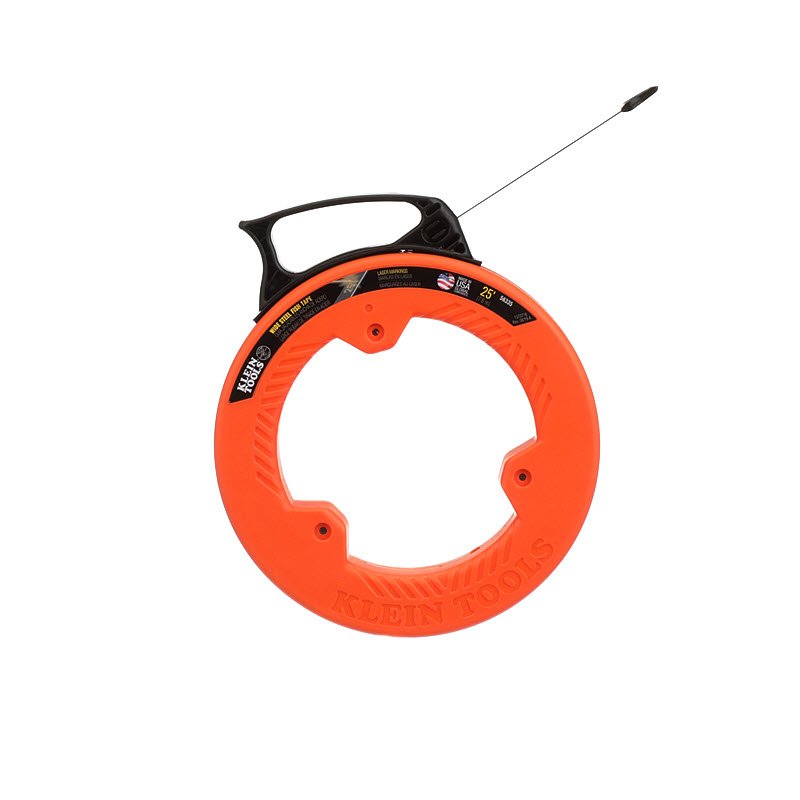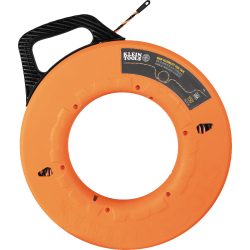Wide Steel Fish Tape, 1/4-Inch x 25-Foot
56335
- Durable, high carbon 1/4-Inch wide spring steel fish tapes are firm yet flexible
- New protective coating reduces non-contact moisture and humidity but keeps the steel dry to touch
- Laser etched markings in 1-Foot (0.3 m) descending increments allow you to more accurately measure the length of conduit runs and determine the amount of tape left to pay out
- Slim-profile plastic tip navigates easily and reduces catching
- Optimized design of the tape housing decreases payout effort; compact size makes it a staple for your everyday tool bag
- Made in the US with Global Components
- Case and handle offer the maximum impact resistance
- U.S. Patents: 8164025; 8168921; 8212178; 9895773; 10099316
The Klein Tools' Fish Tapes are perfect for wire runs associated with short commercial, residential and VDV runs. The high carbon, coated steel is firm with the right amount of flex when pulling wire in attics, down walls or through small branch circuits. The optimized housing and handle design decreases payout effort and reduces binding.
Specifications
Type:
Wide Steel Fish Tape
Application:
Wire Pulling
Special Features:
1/4'' Wide Tape; 60 lb Pull Force
Overall Length:
1.20'' (3.0 cm)
Overall Height:
8.81'' (22.4 cm)
Overall Width:
7.55'' (19.2 cm)
Material:
Steel
Color:
Orange/Black
Tape Size:
25' x 1/4'' x 0.03'' (7.6 m x 0.6 cm x 0.08 cm)
Diameter:
7'' (17.8 cm)
Tape End:
Plastic Slim Tip
Tensile Strength:
230,000 to 280,000 PSI
Weight:
1.3 lb (0.6 kg)
UPC:
092644563355
Warnings
- Wear approved eye protection when feeding, pulling or rewinding fish tape.
- Do NOT use any fish tape on or near live circuits. Use extreme caution when working near any electrical equipment.
- Use a safe work position to avoid loss of balance when using fish tape.
- Never remove screws while fish tape is coiled inside reel.
- Never form pulling loop into a single loop (into shape of a fish hook) or create a sharp edge that could cause fish tape to catch on other objects or cut into insulation of surrounding wires. Pulling loop should only be formed into a double loop.

























